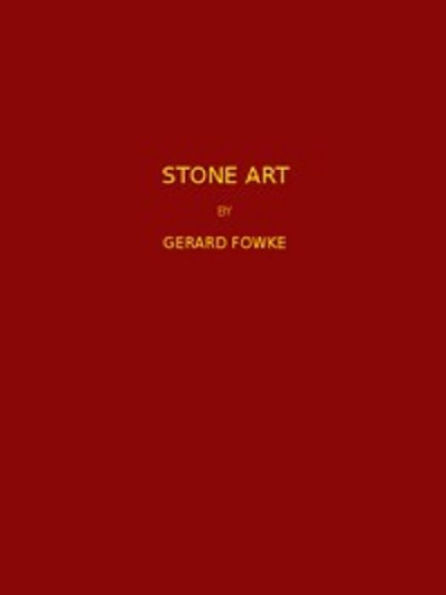The collection of the Bureau of Ethnology includes almost every type of stone implement or ornament, and as the investigations and explorations of the collaborators have extended over nearly all the eastern and central portions of the Mississippi valley, it furnishes a substantial basis for showing the geographic distribution of various forms of objects in use among the aboriginal inhabitants.
It has not been deemed advisable to utilize material contained in other collections. Should this be done there would be no reason for drawing upon one rather than another, and if it were once begun the examination would finally extend to every collection made from American localities, a study which, although perhaps desirable, would transcend the scope of the Bureau plans.
Much that has been published in regard to the distribution of relics in various portions of the country is of little value to a paper of this kind, since few of the objects are sufficiently illustrated or referred to any class in other than the most general terms; so that it is frequently impossible to determine the group in which a given article should be placed. Partly for this reason, partly because the primary purpose is description of a certain collection made in a definite way, little space is given to the descriptive work of predecessors in the field of archaeology. The general results of previous work are, however, carefully weighed in the conclusions reached.
1123176269
It has not been deemed advisable to utilize material contained in other collections. Should this be done there would be no reason for drawing upon one rather than another, and if it were once begun the examination would finally extend to every collection made from American localities, a study which, although perhaps desirable, would transcend the scope of the Bureau plans.
Much that has been published in regard to the distribution of relics in various portions of the country is of little value to a paper of this kind, since few of the objects are sufficiently illustrated or referred to any class in other than the most general terms; so that it is frequently impossible to determine the group in which a given article should be placed. Partly for this reason, partly because the primary purpose is description of a certain collection made in a definite way, little space is given to the descriptive work of predecessors in the field of archaeology. The general results of previous work are, however, carefully weighed in the conclusions reached.
Stone Art (Illustrated)
The collection of the Bureau of Ethnology includes almost every type of stone implement or ornament, and as the investigations and explorations of the collaborators have extended over nearly all the eastern and central portions of the Mississippi valley, it furnishes a substantial basis for showing the geographic distribution of various forms of objects in use among the aboriginal inhabitants.
It has not been deemed advisable to utilize material contained in other collections. Should this be done there would be no reason for drawing upon one rather than another, and if it were once begun the examination would finally extend to every collection made from American localities, a study which, although perhaps desirable, would transcend the scope of the Bureau plans.
Much that has been published in regard to the distribution of relics in various portions of the country is of little value to a paper of this kind, since few of the objects are sufficiently illustrated or referred to any class in other than the most general terms; so that it is frequently impossible to determine the group in which a given article should be placed. Partly for this reason, partly because the primary purpose is description of a certain collection made in a definite way, little space is given to the descriptive work of predecessors in the field of archaeology. The general results of previous work are, however, carefully weighed in the conclusions reached.
It has not been deemed advisable to utilize material contained in other collections. Should this be done there would be no reason for drawing upon one rather than another, and if it were once begun the examination would finally extend to every collection made from American localities, a study which, although perhaps desirable, would transcend the scope of the Bureau plans.
Much that has been published in regard to the distribution of relics in various portions of the country is of little value to a paper of this kind, since few of the objects are sufficiently illustrated or referred to any class in other than the most general terms; so that it is frequently impossible to determine the group in which a given article should be placed. Partly for this reason, partly because the primary purpose is description of a certain collection made in a definite way, little space is given to the descriptive work of predecessors in the field of archaeology. The general results of previous work are, however, carefully weighed in the conclusions reached.
2.99
In Stock
5
1

Stone Art (Illustrated)

Stone Art (Illustrated)
Related collections and offers
2.99
In Stock

Product Details
| BN ID: | 2940157935450 |
|---|---|
| Publisher: | Bronson Tweed Publishing |
| Publication date: | 12/27/2015 |
| Sold by: | Barnes & Noble |
| Format: | eBook |
| File size: | 6 MB |
About the Author
From the B&N Reads Blog
